Is Citrus Peel Edible?
It is indeed. Although lemon isn’t one of the dirty dozen, it is still a good idea to wash any peel or skins you are planning to eat, especially those, like lemon, that it may be more unusual to eat.
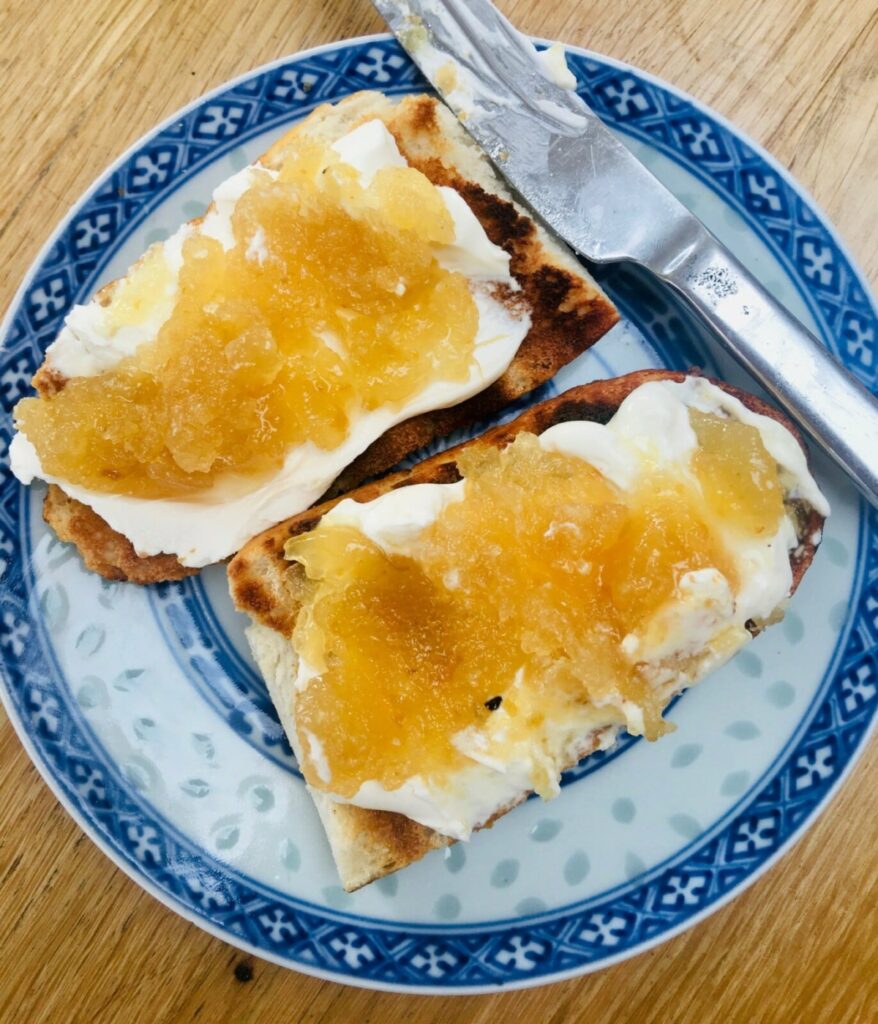
Is Lemon Peel good for me?
We could all do with more fibre in our diets and lemon peel will contribute a whole gram from just 1 tablespoon.
Studies have determined that lemon peel is full of bioactive compounds that may provide numerous health benefits, including
- supporting oral health
- a high source of anti-oxidants
- antimicrobial and antifungal properties
- giving a boost to your immune system
- may promote heart health
- may have anti-cancer properties (please don’t rely on this, lemon peel attributes and benefits need to be researched)
- it may even help eliminate gall-stones
- tips sourced from https://www.healthline.com/nutrition/
More ideas of why eating lemon peel is good for us
What is Lemon Peel Jam
This preserve is made primarily using lemon carcasses that have already been used for something else. They’ve been zested and juiced and would ordinarily just be thrown away. If you don’t have any of those, it will work just as well using whole lemons, or a mix of the two.
I used some lemon carcasses that had been used in cooking, a couple of pieces that had been used to flavour jugs of water, and a single half of a whole lemon. I’d used the other half, and this half had got a bit dried up.
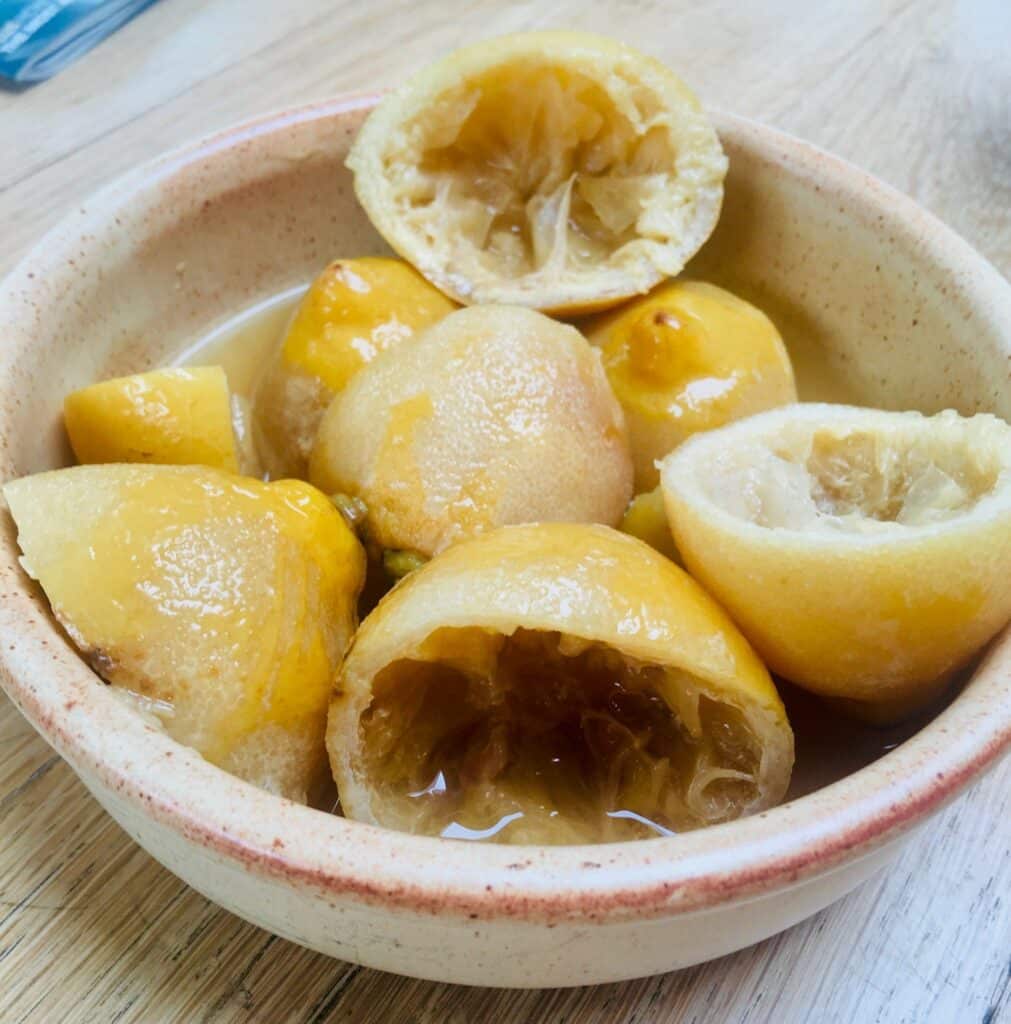
Lemon carcasses after being simmered in a little water
The carcasses are simmered in water until soft, then blitzed and simmered with sugar
How To Make Lemon Peel Jam
If you don’t use lemons very often, keep the used ones in the freezer until you are ready to use them. Once you have 2 or 3, simmer them whole in a little water until tender. I put water in about halfway up the fruit. They will take about 30 minutes to cook through.
Once cooked through, I like to boil them fast with the lid off until there is just a little water left, so I don’t throw anything away.
Once cooled, remove the pips. Now blitz them with a stick blender, liquidiser or food processor until there are no lumps. Or if you’d like a few pieces left whole, remove one half and chop into pieces or little shreds, then add back into the puree.
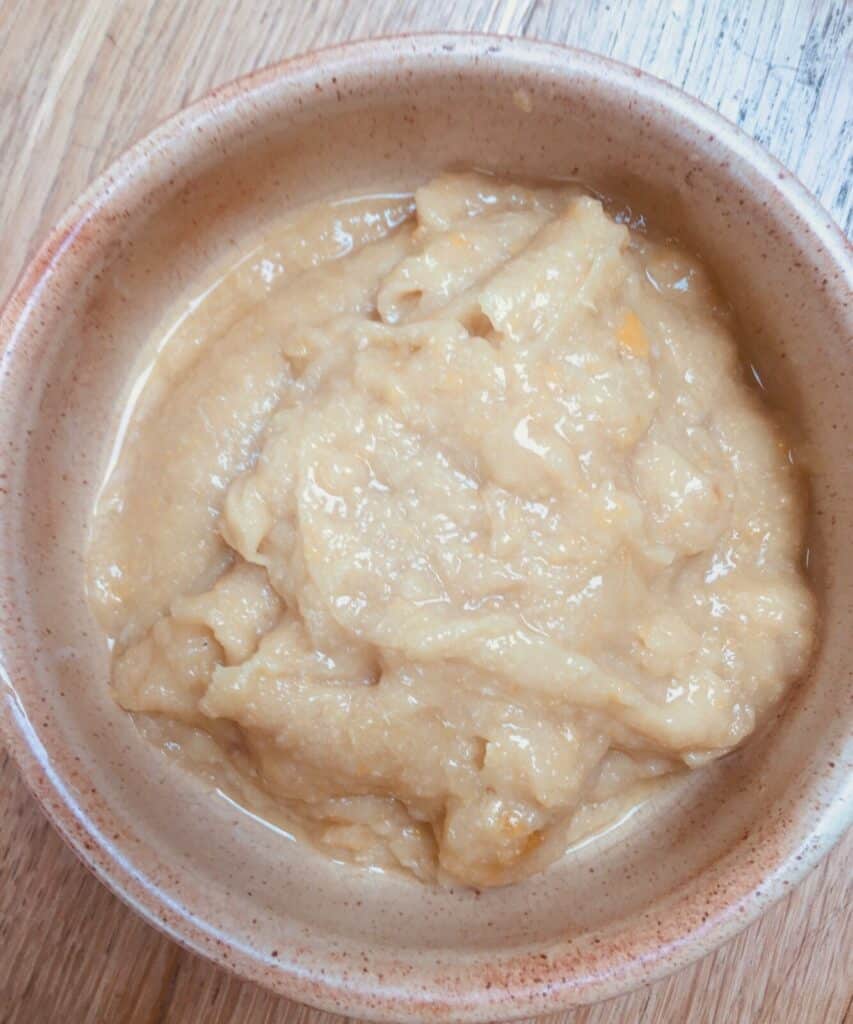
Weigh the puree and add the same amount of sugar. Blip on a low heat for about 10 minutes and pot into a couple of sterile jars. Three lemons made a jar and 3/4.
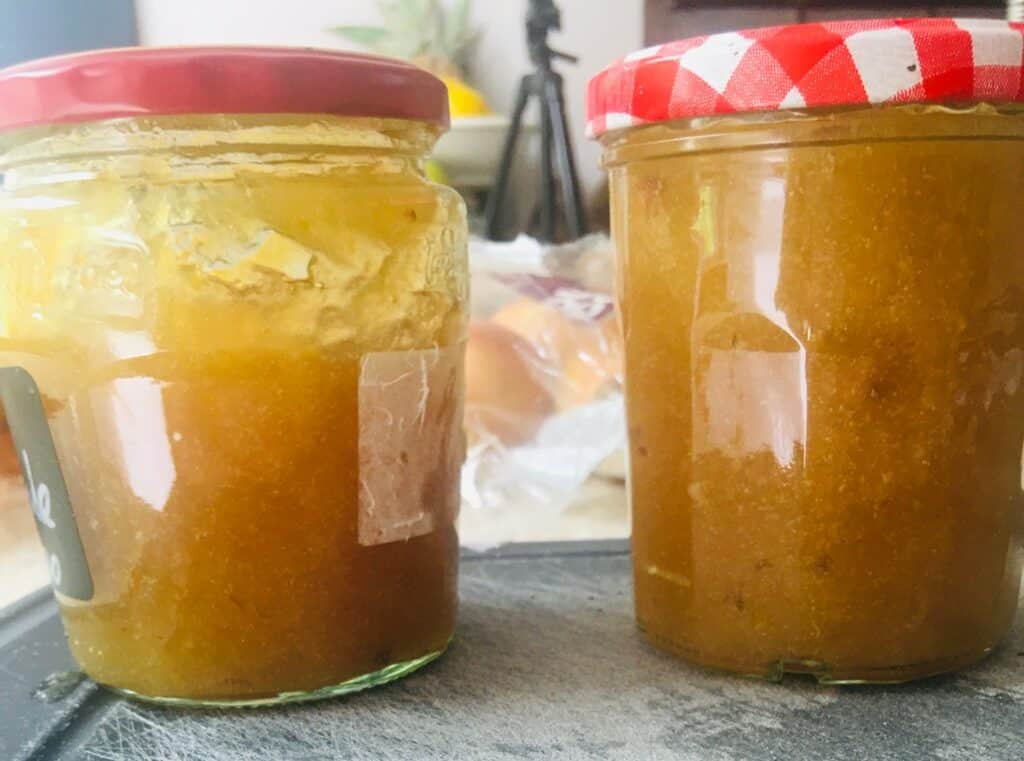
So What’s It Like?
Being made entirely from lemons, it sets like a dream. The flavour has a slightly bitter edge, like a good marmalade. My husband really likes it.
- It’s wonderful on buttered toast or anything like that
- Would be great as a Victoria sponge cake filling
- Use in thumb print cookies
- In a baked sponge
- Mix with cream cheese for a different flavour, or spread the cream cheese on toast and top with the preserve
This works just as well using orange peels, and just like this, reduces waste, making the most of what we buy.
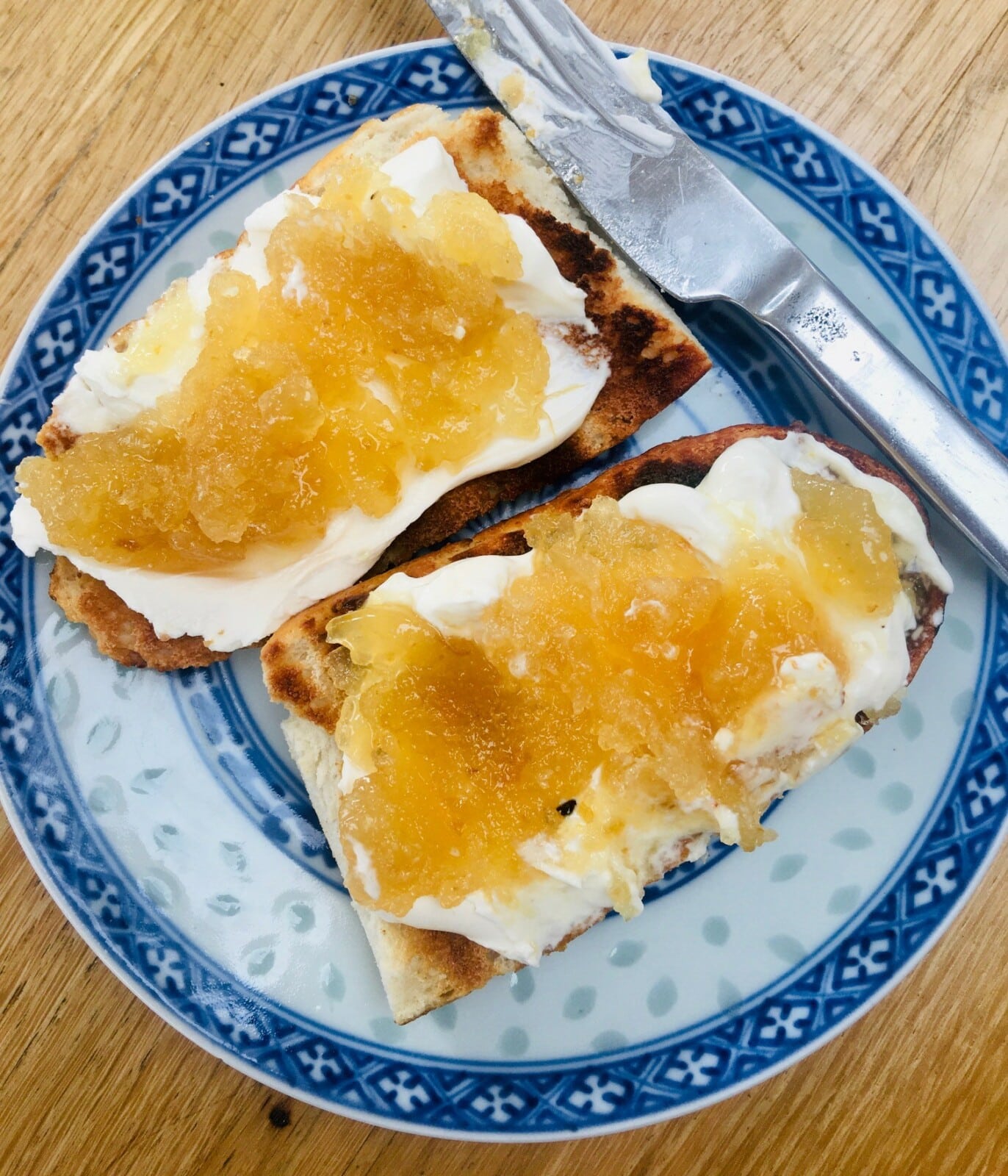
More uses for lemons
https://www.wellandgood.com/lemon-peel-benefits/
Ingredients
- 3 whole lemon carcasses that have previously been zested and juiced
- 200 g sugar roughly
- 250 ml water
Instructions
Lemons
- Place the lemons in a thick based saucepan, along with the water.
- Put the lid on and simmer gently until the lemon peels are cooked through. This will take about 30 minutes.
- Remove the lid and boil fast until there is just a very small amount of water left.
- Leave until cool and remove the pips.
- If you would like some bits in your jam, remove one half now. Cut that half into small lumps or shreds
- Puree the remaining lemon halves into a smooth pulp using a food processor, stick blender or liquidiser, adding the shreds, if any, back in now.
- Now weigh the puree and add the same amount by weight of sugar.
- Put back on the heat and blip gently for about 10 minutes. Be careful, it's a thick mixture and may splash.
- You can test the set by putting a teaspoon of jam on a cold saucer and putting it in the fridge for a couple of minutes. If it’s ready, it will have formed a skin in that time and when you push it gently with a finger you’ll see that skin.
- If you have a thermometer able to measure high enough, it should set when it reaches 104c/220f. Just keep simmering until it’s ready. Although being all lemons, there is masses of pectin and it will set solid.
Jam Jars
- While the jam is simmering, sort your jam jars out. If you haven’t already, wash them, and pop them in a low oven to sterilise them. Some people use jars fresh from the dishwasher. Whatever you do, they need to be very clean, and dry.Any water in the jars allows a sugar syrup to develop, and over time, that may well grow mould, spoiling your lovely jam. And they need to be scrupulously clean so your jam will keep well, there must be no germs, bacteria or mould spores at all in the jars.And don’t forget the lids. If you are not using lids, cover the jars with cellophane circles and elastic bands. Or use circles cut from cereal box inners and perhaps a pretty ribbon. A little gingham fabric looks fabulous. Anything that will keep the jam clean and dry will do the job.
- Once the jam is ready to set, there may be scum on the top. Either skim it off, or stir in a generous knob of butter, this gets rid of any scum floating on the surface. Stir well. Leave to cool for about 10 minutes, stirring now and again
- Put your jars on a heatproof surface and carefully ladle in the jam. Be careful, splashes will burn you badly at this temperature. A jam funnel is helpful for this
- I usually put a very clean tea towel over the filled jars until they are just warm and only then put the lid on. The tea towel is to keep any mould spores in the air, off the surface of the jam.Others have recommended putting the lids on straight away and turning the jars upside down
- I used 3.5 lemons and it made almost 2 jam jars full.
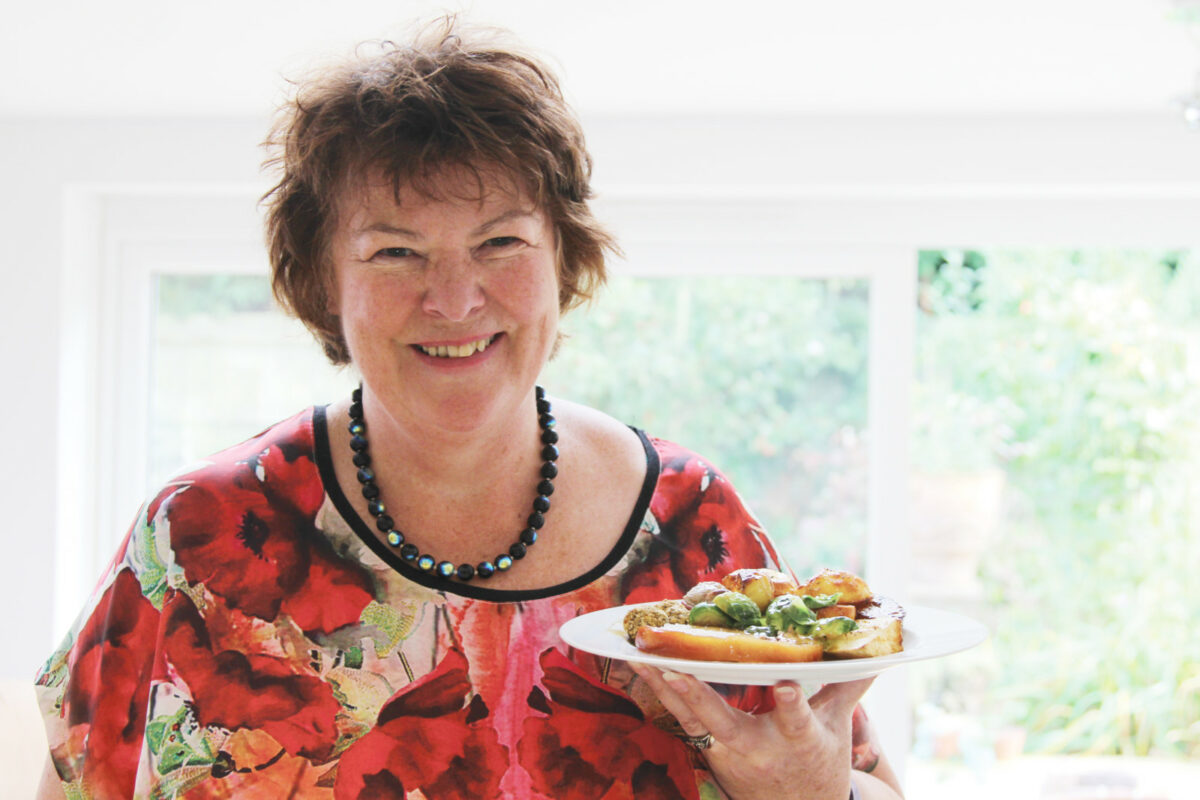
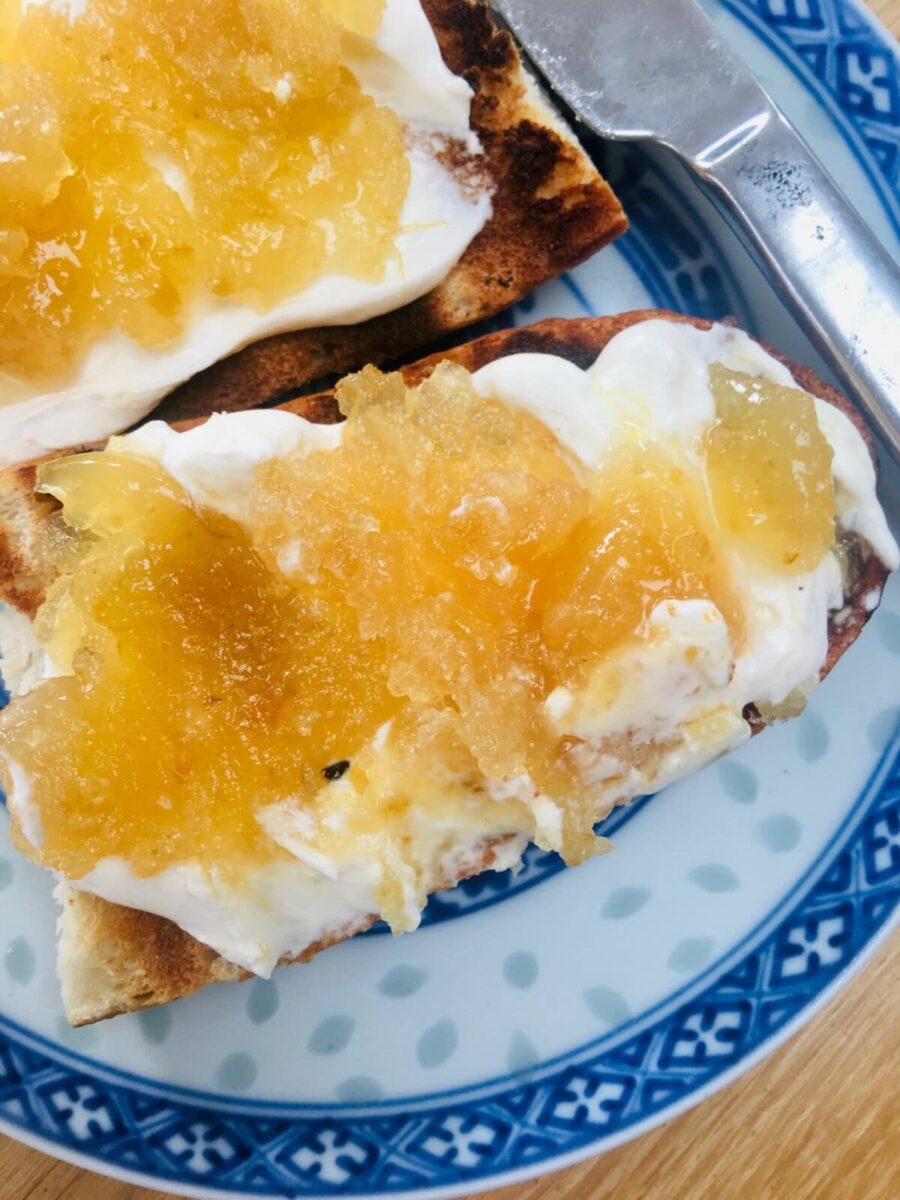





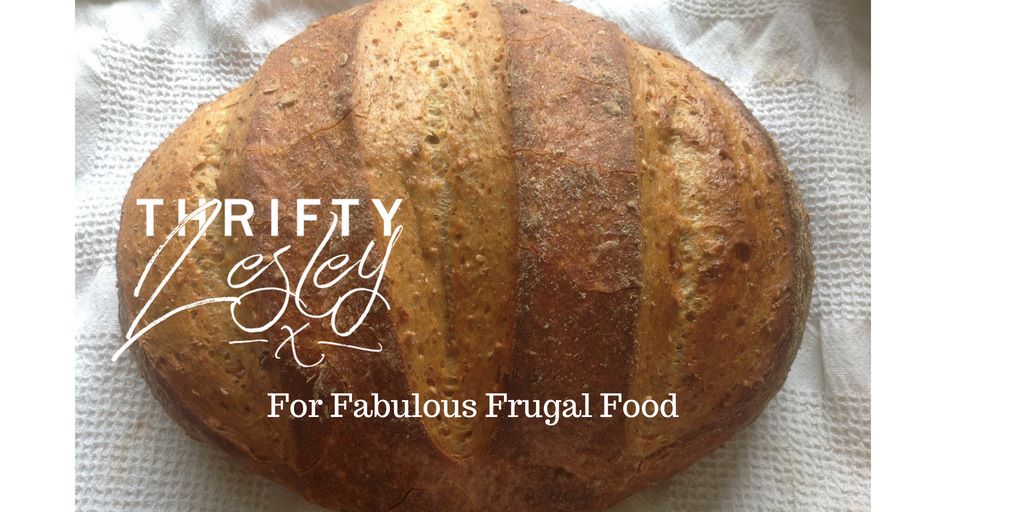
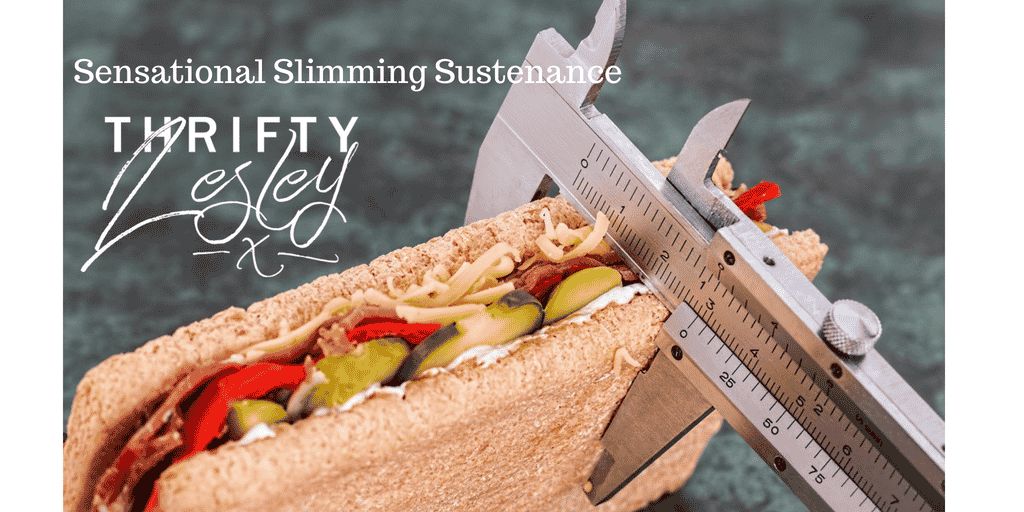
I’m so glad you love it! I must admit, I do get a buzz out of making something that uses such frugal ingredients 🙂
Thank you, Lesley. I kind of went “overboard” on making the jam waiting for a cool day to do it. . I could give some as gifts to fiends. I really love this jam recipe!
Susan – I tend to just make 2 or 3 jars at a time, so haven’t really tested the length of storage life. I’d hate for you to waste it, so yes, if you have lots, I would store them in the freezer where they’ll sit quite happily for months on end.
They have the amount of sugar that should preserve them at ambient temperature, but as I say, I haven’t tested that
Thanks, Lesley! Those are all good ideas. I’ll try one of them. Now, I have another question, should the jam jars be put in the freezer for longer storage? I made so many jars! I don’t want them to spoil. How long will they last in the fridge and in the freezer? I forget.b
Susan – I don’t have any specific recipes, but if I was going to an event like that, I would think maybe a trifle? So a vanilla sponge on the base, a sprinkle of limoncello over the sponge, good custard, and topped with whipped double cream, swirled through with the lemon jam, sprinkled with toasted almond slivers.
Or, a vanilla sponge tray bake, topped with sweetened cream cheese swirled through with lemon jam, or add the jam to the cake batter itself
Or, a Bakewell tart type bake, using the lemon jam in place of the raspberry jam
Any help?
Once again I took my lemon peels out of the freezer to make this wonderful lemon peel jam. I’d like to find a way to use it in a dessert to take to a small church gathering. Lesley, Do you have any recipes like that that I could use?
Caroline – So glad you’ll find it useful – I get a real buzz out of making something from nothing!
I haven’t made it yet but have sooooooo many left over skins from making lots of lemon syrup. I didn’t want to use eggs and butter and make curd, and have already lots of marmalade, so this recipe looks wonderful! Just a shade different from marmalade.. love the sound of the cream cheese accompaniment and able to use the skins! Thank you for this dream recipe!
First time making jam? Very well done for having a go and I’m so glad you liked it 🙂
I’m so happy to have found this because I have so many lemons. First time making a jam and it was so easy. Hopefully I did everything right, Thank you for sharing your recipe.
Debbie – have you made any yet? How did you get on?
Delicious. I love a way to use juiced lemons. Thank you
Susan – how lovely, I’m so glad you like it. Well worth trying with oranges too, or even a mixture. Such a buzz getting something from nothing!
My husband and I love this jam recipe and, like you, I love using something that normally would be thrown away. It is sooo easy to make and is delicious! Thank you so much for this recipe. I’m looking to make some with oranges, too!
I mean 3 whole lemons that have previously been zested and juiced. I’ll change the recipe to say that
When you say 3 lemon carcasses do you mean a whole lemon or 2 halves of a lemon? Some clarity required here.
Lesley – I have quite a few in the freezer right now, so time I made some more 🙂
Wow! Came across your brilliant website recently and – as I drink lemon juice every morning – decided to save my shells for this jam. I’m amazed how easy it is … how thrifty … and absolutely delicious!! Thank you!!
I found much the same, under the pretext of needing to ‘test’ it on something! Finding something delicious from something that would have otherwise been thrown away gives me such a buzz 🙂
This jam is delicious and so easy to make – I am really chuffed with it and am finding myself thinking of reasons to eat some more, even though I don’t eat much jam normally. A lot of the appeal (sorry!) is that this recipe retains the lovely fresh quality of the lemons… thank you so much Lesley!